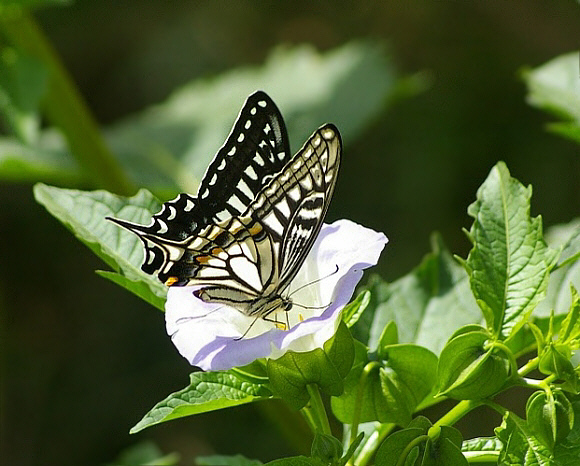Introduction
Back in the 18th century when Linnaeus created the System Naturae, the word Papilio was used as the genus name for every known species of butterfly in the world. Since then much has been learnt about the relationships between different species. Consequently most have been reassigned to new genera, and only about 215 of the 17600 currently known species are retained in Papilio.
Papilio xuthus is found in Myanmar, China, Taiwan, Korea, Ussuri, Amur, Japan, the Philippines and Hawaii.
Habitats
This species inhabits woodland, suburban gardens, city parks and Citrus orchards, at elevations between sea level and about 1000m.

Lifecycle
The spherical pale yellow egg is laid singly on the upper surface of leaves of Euodia, Zanthoxylum, Phellodendron, Poncirus and cultivated Citrus (Rutaceae). The fully grown caterpillar is green with large white spots above the prolegs. It has a pale green ‘saddle’ broken into 4 sections, the trailing edge of each being marked narrowly in white and broadly in dark green. The 3rd thoracic segment has a mottled patch within which are a pair of reddish false eye marks. The pupa is pale brownish or green depending on the substrate used for pupation.
Adult behavior
Both sexes nectar at a wide range of flowers including Lantana, Lycoris and Convulvulus.
